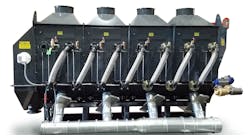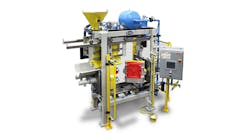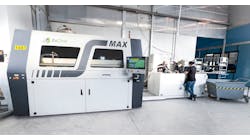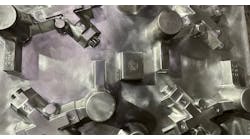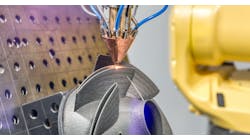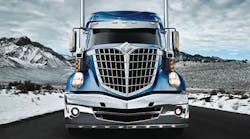The collapse of the automotive industry in 2009 meant the demise of numerous automotive foundries, but the sector’s revival in the past five years has restored stability and even growth for some the survivors. No non-captive metalcaster illustrates this transitory period more clearly than Grede Holdings LLC. The ferrous foundry group was formed early in 2010 from the remainders of two companies weakened by the automakers’ decline and related developments. With new backing, Grede established a wide footprint (currently 13 foundries in the U.S. and Mexico, and three dedicated machining operations), acquired more capacity, and solidified its position in the automotive supply chain.
Now, the next stage of development is underway for Grede, indicated by capacity expansion in progress at foundries in St. Cloud, MN, and Briscoe, NC. But, there are different objectives being pursued, and these continue to track trends underway in the automotive supply chain.
First, Grede is reaffirming its dedication to the commercial vehicle manufacturing industry with the projects underway at the North Carolina foundry. Truck builders are on the cusp of demand revival based on changing emissions regulations, and the fleets’ need to replace aging or outdated vehicles.
In March Grede announced an expansion worth more than $20 million for the Biscoe plant (actually underway since last September and continuing through 2017), one that will elevate the plant’s position in the automotive/commercial-vehicle supply chain with higher-volume and more customized production capabilities. Most of the plant’s cast products already are supplied to builders of Class 8 trucks.
The investment will cover 26,000-sq. ft. of new manufacturing space (construction starting this month), with three new molding machines and mold handling systems, and the addition of heat-treating system as the process highlights. Ground was broken last September for an in-line immersion system for painting products. In January, construction began for a new dust-collection system, a project completed last month.
Grede plans to add new finish machining capability, too. All these efforts point to the automotive/commercial vehicle OEMs’ reliance on fewer casting suppliers and thus greater volume from their sources. “The vertical integration expansion project will make Biscoe a premier casting operation that is lean, one-piece flow,” a Grede source detailed, “offering customers in all markets, products that are heat-treated, painted, and machined at world-class, total product cycle times.
Another trend demonstrated by Grede’s efforts is OEMs’ expectation of faster and smoother information flow. Of the $20 million dedicated to the Briscoe foundry, Grede has identified more than $5 million to increase its engineering capabilities. It described this as “a new, multi-faceted approach to product development for heavy-duty truck and other transportation and industrial applications.”
This means more design services using process simulation, mold flow simulations, and 3D prototype printing capabilities, all of which link the casting producer more tightly to the vehicle manufacturers’ efforts to design and introduce new products more quickly, with requisite quality and cost goals. The majority of these additions will be accomplished within 18 months, the source said.
A third trend, related to the second yet carrying an exceptional urgency for commercial vehicle producers, involves a renewed emphasis on material selection and development. Grede noted its engineering improvements will “drive design and development activities, lightweight design programs, and material evaluations.” OEMs want suppliers to lighten everything, which means the foundry must test and provide new materials as well as designs. Grede-Briscoe’s efforts will include designs with SiBoDur (a family of silicon-boron ductile iron alloys used for high-endurance parts like crankshafts and con-rods) and high-silicon molybdenum materials, as well as lost foam castings.
The commercial vehicle market represents about 15% of Grede Holdings’ overall production, but it is a market that it identifies for growth potential. This demonstrates no recent trend but rather the continuing effort by metalcasters to establish a secure position in the automotive supply chain.




